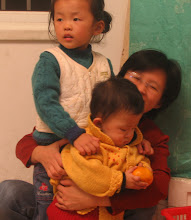
Portulaca Oleracea
English name: purslane
Indonesian name: krokot
Chinese name: 马齿苋 mǎ chǐ xiàn or 马齿菜mǎ chǐ cài

Can be used for reducing inflammation, curing diarrhea, newborn jaundice, avitaminosis, chincough, leucorrhea (whites), and for detoxification purpose. Also can be eaten like spinach or as salad.
Di China, tumbuhan krokot terkenal manjur untuk menyembuhkan diare. Caranya: daun krokot segar direbus dengan air dan ditambahkan gula merah secukupnya. Diminum 2 atau 3 kali sehari.
diarrhea: 60~90 grams fresh purslane, boil with water for about 10 minutes, add brown sugar. Drink twice a day.
leucorrhea (whites): 60 grams purslane, 2 egg-whites; mix it. Pour boiled water into the mix, drink it once a day.
newborn jaundice: fresh purslane, blend into juice. take 30 grams (around 30ml), pour boiled water into it. drink twice a day.
urinary system problem (e.g. blood in urine or stool) : Fresh purslane, blend into juice. Take about 60ml or half glass, drink with water from rice-cooking. drink twice a day.
For further readings:

Purslane has a slightly sour and salty taste. It has more beta-carotene than spinach, as well as high levels of magnesium and potassium. Historically by European and Asian cultures, it has been used as a remedy for arthritis, constipation, and inflammation of the urinary system. Chinese herbalists found similar benefits, using it in respiratory and circulatory function, also for curing diarrhea or dysentery.

Recently, it's been found that purslane contains more alpha linolenic acid (a type of omega-3 fatty acids) than any other leafy vegetables plant. Researchers see evidence that these substances lower blood pressure and cholesterol levels as well as make the blood less likely to form clots. It also containes vitamins (mainly A and C, some B and carotenoids), as well as dietary minerals, such as Mg, Ca, K, Fe.
And, purslane has only 15 calories per 100 g portion.
Also present are two types of betalain alkaloid pigments, the reddish betachanins (visible in the stems color) and the yello betaxanthins (flowers and slight yellowish cast of the leaves). Both of these pigment types are potent antioxidants and have been found to have antimutagenic properties in laboratory studies.

Some source:
http://en.wikipedia.org/wiki/Portulaca_oleracea
http://www.prairienet.org/pcsa/recipes/purslane.htm
http://www.wildmanstevebrill.com/Plants.Folder/Purslane.html
http://landscaping.about.com/cs/weedsdiseases/a/purslane.htm

5 comments:
Thanks infonya, Ci :)
wahhhh bagus nehhh artikelnya secara gw suka problem ama perut...
thank ya Yen..
ohya? baru tau nih.....
so far gw taunya cuman daun jambu...kuno ya?
oh yang modern mah jelas obat sakit perut bentuk pil...hihihihi....
g juga baru tau tuh , tapi daun Krokot tuh g beneran lom perna liat , sepintas mirip selada air yah ?
ntar g tanya2 org disini deh , thx for info yah .
wah, gw juga baru tau nih...
thanks for sharing ya, yen...
Post a Comment